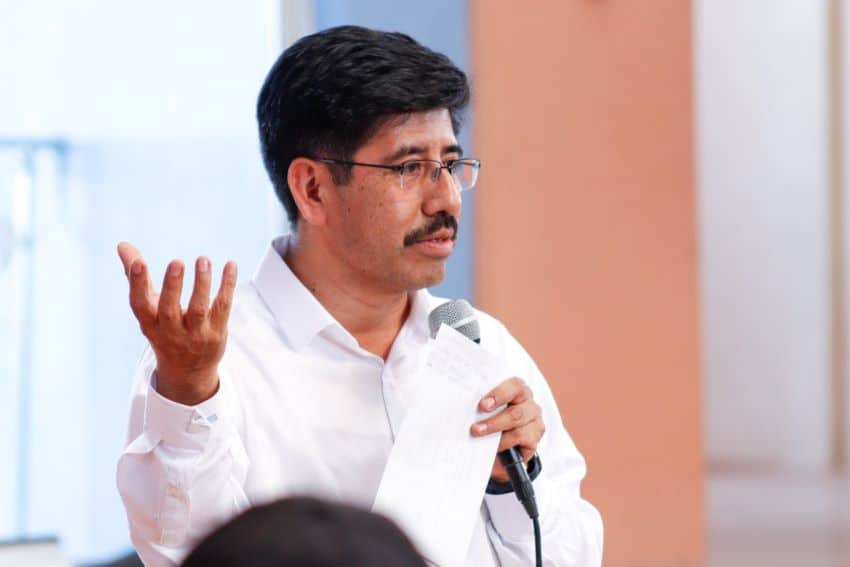Mexico’s new Supreme Court takes the bench
Monday, Sept. 1, is a landmark day in the history of Mexico’s judiciary, as hundreds of judges elected in the nation’s first-ever judicial elections will commence their new roles.
Among the almost 900 new judges who start their duties today are nine Supreme Court justices elected by popular vote on June 1.
The nine new justices and 872 other judges and magistrates will be sworn in at a ceremony in the Senate on Monday night.
The number of justices on the Supreme Court bench will thus decline from 11 to nine.
Three of the nine incoming justices, Lenia Batres Guadarrama, Yasmin Esquivel Mossa and Loretta Ortiz Ahlf, served on the Supreme Court’s final 11-member bench. The other six justices who will be sworn in on Monday night, including incoming Chief Justice Hugo Aguilar Ortiz, have not previously served on the bench of the nation’s highest court.
All of the nine people elected as justices on June 1 are affiliated with, seen as sympathetic to, or were at least tacitly supported by the ruling Morena party, a situation that government critics argue will eliminate a vital check on executive and legislative power.
They were elected in judicial elections that had a turnout of around 13% of Mexico’s eligible voters. The elections were held as a result of a controversial judicial reform that was approved by Congress last September. A second round of judicial elections will be held in 2027.
Supreme Court justices and other federal judges were previously appointed to their roles.
When a Supreme Court justice position became available, the president of the day would nominate three candidates for the role and the Senate would endorse one by a two-thirds vote.
As part of her defense of the judicial reform and judicial elections, President Claudia Sheinbaum highlighted on repeated occasions that she is relinquishing the right to nominate justices in favor of allowing the people of Mexico to decide who should serve on the Supreme Court.
Sheinbaum — who argued that judicial elections were needed to rid the nation’s judiciary of corruption and other ills — asserts that allowing citizens to elect judges enhances democracy in Mexico.
She recently said that the commencement on Sept. 1 of the terms of recently elected judges marks “the end of an era of nepotism in the judiciary.”
The end of the 2-chamber era
The Supreme Court previously had two chambers — one that dealt with cases regarding civil and criminal law and another that heard cases regarding labor and administrative law.
Each chamber was composed of five justices, and the chief justice didn’t participate in their sessions, participating only in Full Court sessions.
Now, all nine justices will deliberate and decide all cases in Full Court sessions. For a ruling to be valid, at least six of the nine justices will have to support it.
The Supreme Court building is in the historic center of Mexico City, a short walk from the National Palace, Mexico’s seat of executive power and now the president’s residence.
Aguilar, the incoming chief justice, has said that the Supreme Court could hold sessions in locations outside its headquarters as part of efforts to “bring justice closer to the people.”

New judges will have a lot on their plate
The recently elected Supreme Court judges will join hundreds of other existing judges whose positions were not contested in the elections on June 1.
They will have an intense workload from the beginning of their terms.
The newspaper Reforma reported on Monday that the federal judiciary has a “historic” backlog of cases to resolve. At the end of July, the federal judiciary had 552,800 active unresolved cases, 25% more than a year earlier, Reforma reported.
That figure, the newspaper said, doesn’t include more than 50,000 federal labor law cases.
Reforma said that the retirement of hundreds of circuit court magistrates and dozens of district court judges who decided not to contest the judicial elections was one reason for the growing backlog of cases.
“Another problem is the lack of resources, since the Chamber of Deputies reduced the budget of the Federal Judiciary Council (CJF) by 10% compared to 2024, so no new courts or tribunals have been created to help address the growing workload,” Reforma said.
With reports from El Financiero, El Universal and Reforma
The post Mexico’s new Supreme Court takes the bench appeared first on Mexico News Daily
Comments
Post a Comment